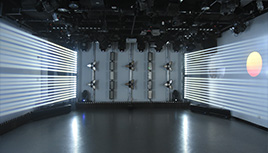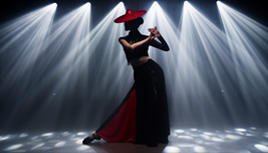Interoperability Between Brands and Systems in Stage Lighting
2025-02-17 Post By: Longmangroup
One of the most persistent challenges in the stage lighting industry is ensuring seamless interoperability between different brands and systems. With an increasing variety of lighting manufacturers offering advanced LED technology, each brand typically employs its own proprietary control protocols, software, and hardware configurations. The complexity of these systems grows when integrating new LED stage lights with legacy lighting infrastructure. Ensuring that devices from multiple manufacturers can communicate with one another and work harmoniously together is crucial, especially for large-scale productions that demand precision, flexibility, and reliability.Key Issues in Interoperability:
1. Diverse Communication Protocols and Standards
Each lighting manufacturer may use different communication protocols, such as DMX, Art-Net, sACN (Streaming Architecture for Control Networks), or even proprietary communication formats. These protocols are the backbone of how stage lighting systems communicate with control consoles, sensors, and other fixtures. However, when these systems need to be integrated, protocol compatibility can be a significant issue. For instance, a lighting designer might use a mix of fixtures from various manufacturers, but if each manufacturer’s lights use a different protocol, integration becomes difficult, and synchronization issues arise.
Example: Imagine a large concert that involves multiple lighting setups, such as LED wash lights, moving heads, and spotlights. The LED lights might use Art-Net, while the moving heads rely on DMX, and the traditional spotlights use sACN. If the control system is not able to convert or support multiple protocols, the lighting designer could face challenges in ensuring that all lights operate seamlessly, especially when precise color changes and movements are required in sync.
Solution: One effective solution is to employ universal lighting control protocols like DMX or Art-Net that have broad support across many brands and products. Additionally, using protocol converters or gateways that translate one protocol to another can facilitate the integration of different systems. Many modern lighting consoles now support multiple protocols simultaneously, offering built-in converters that allow DMX, Art-Net, and sACN devices to work in unison. For example, a system like the GrandMA2 control console can interface with different brands' fixtures by supporting various protocols, thus reducing compatibility issues.
2. Proprietary Software and Control Interfaces
Different lighting manufacturers often bundle proprietary software with their fixtures. While these software solutions can provide specialized features optimized for their own products, they can also create issues when trying to control lights from other manufacturers. These software interfaces are usually tailored to the specific needs of the brand's hardware, and as a result, they lack the flexibility to integrate seamlessly with other brands' fixtures.
Example: A lighting designer might use a software interface from one manufacturer to control a set of LED moving heads. However, when introducing LED par cans from a different manufacturer into the mix, they may not be controllable via the same interface, requiring the designer to use separate software or an external bridge to control the new lights, which complicates the process and increases the risk of errors during live performances.
Solution: Manufacturers can address this issue by developing more standardized software interfaces that offer broad compatibility. For example, many control systems now support Open Sound Control (OSC) or WebSocket protocols, which enable easier communication across different systems. Moreover, creating more universal and open-source software solutions or ensuring software platforms can integrate with third-party tools can help reduce the complexity. An example of this in action is the Light Converse software, which integrates with various brands and is widely used for both visualization and control, allowing users to combine lights from multiple manufacturers in one system.
3. Complex Fixture Parameters and Custom Features
Lighting fixtures from different brands often offer unique features, effects, or customizations that may not be supported or easily replicated by other systems. For instance, one manufacturer might offer a special color mixing algorithm or a custom gobo wheel configuration that isn't found in fixtures from other brands. These custom parameters can result in inconsistency and incompatibility when trying to integrate multiple fixtures into a single system.
Example: Suppose a lighting designer wants to create a specific effect where both LED moving heads and LED wash lights must change colors simultaneously, and some fixtures have a unique color blending algorithm that others do not. If the fixtures are not compatible in terms of how they handle color mixing or transition effects, it can lead to a visual inconsistency, disrupting the intended lighting effect.
Solution: To solve this issue, lighting manufacturers can develop a standardized set of parameters or effects that work across their entire product line while ensuring that these parameters are compatible with other brands. One potential solution is the use of DMX profiles, which are preset configurations of parameters that ensure uniformity in how each fixture behaves. For example, DMX profiles for each fixture can be stored in the control software, allowing for better interoperability even when fixtures have custom features. Additionally, lighting designers can use DMX-controlled color matching software to ensure that different fixtures achieve the same color appearance regardless of their underlying technology.
4. Software and Firmware Version Compatibility
As with any technology, the software and firmware versions of stage lighting systems are continually updated. Sometimes, these updates are not backward-compatible, meaning that new software releases may not work with older fixtures, or vice versa. This issue is particularly problematic for larger, multi-year productions that rely on a mix of older and newer equipment. A firmware update might improve the functionality of one brand’s fixtures, but it could make them incompatible with another brand’s hardware that hasn’t been updated yet.
Example: A venue might have a mix of legacy moving lights and newer LED fixtures. If the older fixtures are running on outdated firmware, they may not respond properly to commands sent from a new control system that requires updated software. The result could be flickering lights, lag, or complete failure to execute commands.
Solution: To minimize issues with software and firmware compatibility, lighting manufacturers should provide consistent, long-term support for older fixtures, ensuring that new firmware versions are compatible with legacy systems. In addition, control consoles should offer compatibility modes or backward-compatible settings to allow communication with older fixtures. For example, software platforms like Chauvet’s ShowXpress offer firmware update tools and compatibility checks to ensure that both new and legacy devices can be managed within the same setup. Additionally, regular testing and updates by lighting designers and technicians can help ensure that the system remains up to date and fully functional.
5. Complexity in Troubleshooting and Error Resolution
When lighting systems from different manufacturers are integrated, troubleshooting can become a time-consuming and challenging task. If a problem arises—whether it's a connection failure, faulty lighting fixture, or unexpected behavior—determining the source of the issue can be difficult because it could be related to any part of the integrated system. This complexity is further amplified in large-scale productions with thousands of control channels and a variety of lighting devices.
Example: During a live concert, the lighting system suddenly starts flickering, and one of the fixtures fails to respond. The lighting technician now needs to figure out whether the problem is a communication failure, a hardware malfunction, or a software bug. With equipment from multiple brands, pinpointing the issue could require diagnosing multiple systems, wasting valuable time and potentially affecting the performance.
Solution: Lighting control systems that offer comprehensive diagnostic tools and real-time monitoring can significantly reduce troubleshooting time. Manufacturers can integrate health-check features within their systems that automatically detect communication issues, faulty connections, or hardware malfunctions. For instance, the Elation Professional's M-Series lighting consoles offer automatic fault detection, alerting the user to issues with specific fixtures. Additionally, lighting designers can use systems that offer remote monitoring capabilities, allowing technicians to resolve issues on-site or even from a distance during performances.
Interoperability between different brands and systems remains one of the most critical challenges in the stage lighting industry. While advances in communication protocols, software compatibility, and hardware design have improved integration, there are still significant hurdles to overcome. By adopting more universal standards, creating flexible software interfaces, and enhancing compatibility across systems, manufacturers can help ensure that lighting designers and technicians can seamlessly integrate equipment from different brands without encountering major issues. Additionally, providing robust diagnostic tools and backward compatibility features will go a long way in ensuring that large-scale productions can operate smoothly, even when using a mix of older and newer technologies.














